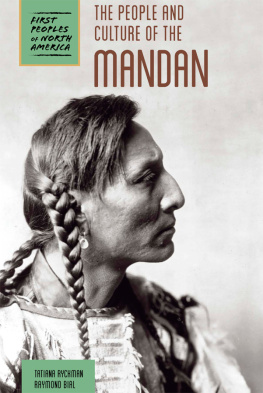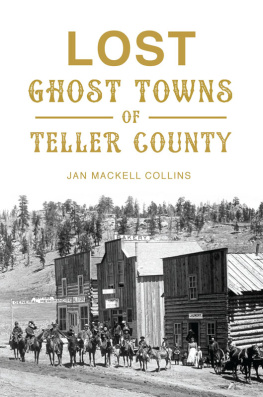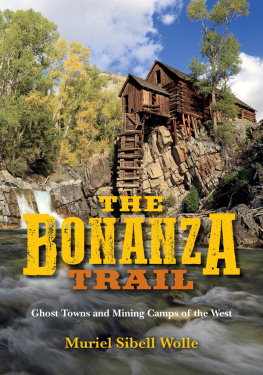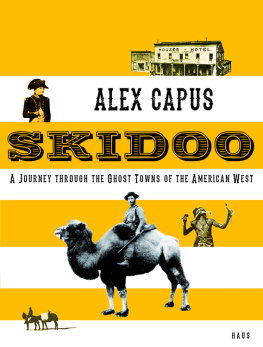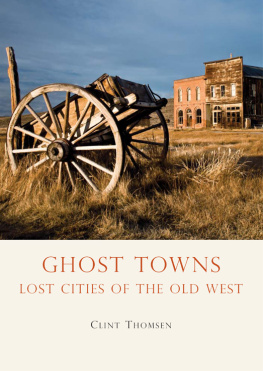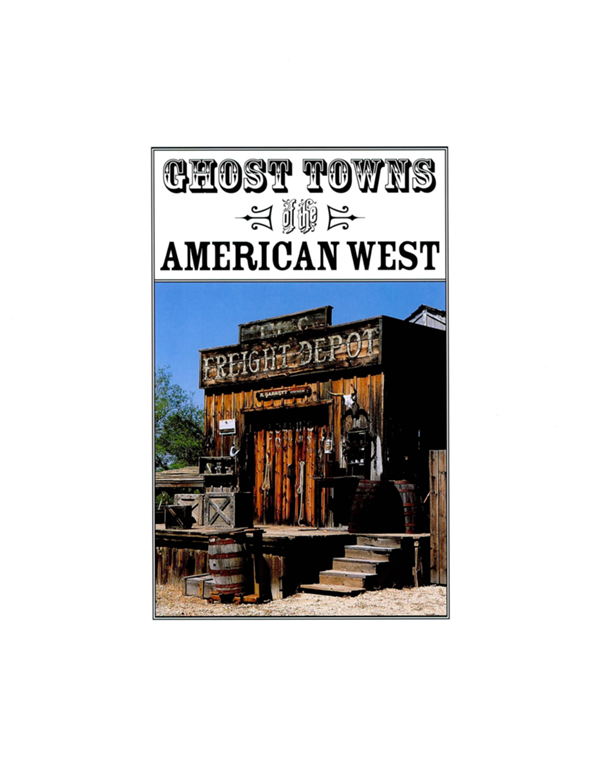
GHOST TOWNS of the AMERICAN WEST
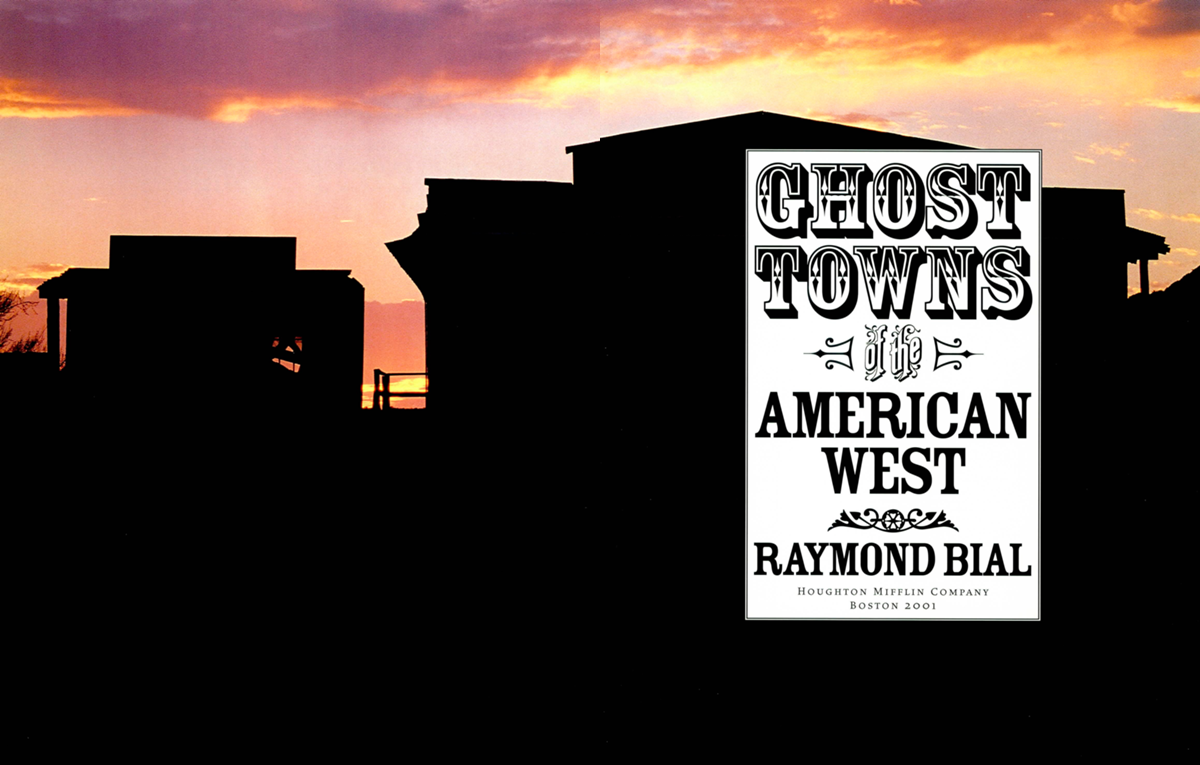
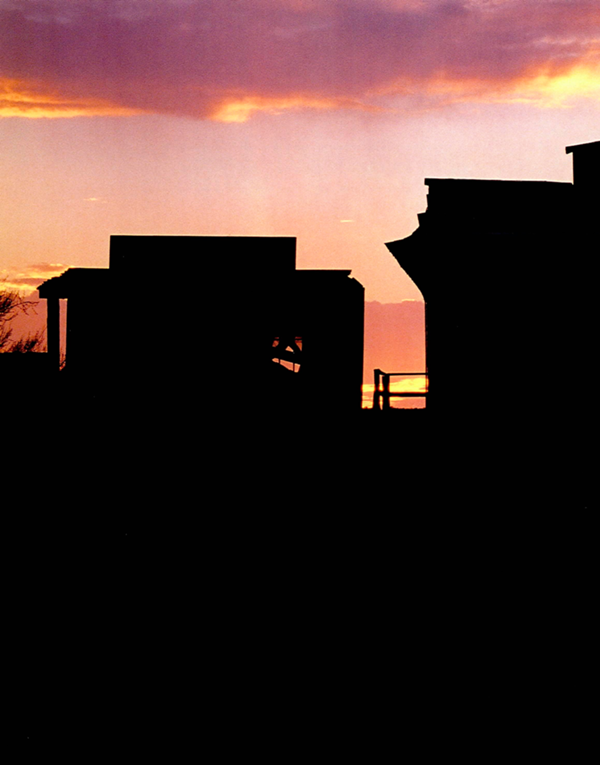
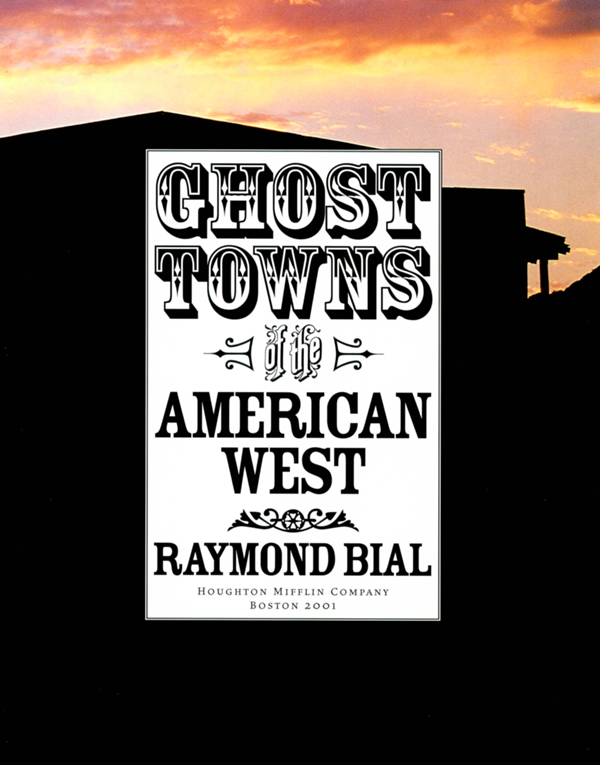
GHOST TOWNS of the AMERICAN WEST
RAYMOND BIAL
H OUGHTON M IFFLIN C OMPANY
B OSTON 2001
To my wife, Linda, my children, Anna, Sarah, and Luke,
and my sister, Catherine, who helped in so many ways with this book.
R.B.
The author would like to express his appreciation to the following locations in Arizona where most
of the photographs in this book were made: Goldfield Ghost Town, Apacheland, and Old Tucson.
Copyright 2001 by Raymond Bial
All rights reserved. For information about permission to reproduce selections from this book, write to
Permissions, Houghton Mifflin Company, 215 Park Avenue South, New York, New York 10003.
Visit our Web site: www.houghtonmifflinbooks.com.
Book design by Lisa Diercks
The text of this book is set in Vendetta Light and Rosewood.
Library of Congress Cataloging-in-Publication Data
Bial, Raymond.
Ghost towns of the American West / Raymond Bial.
p. cm.
ISBN 0-618-06557-1
1. Ghost townsWest (U.S.)Juvenile literature. 2. West (U.S.)History, LocalJuvenile
literature. 3. Frontier and pioneer lifeWest (U.S.)Juvenile literature. [1. Ghost towns. 2. West
(U.S.)History.] I. Title.
F591.B544 2001
978dc21
00-31895
Printed in Hong Kong
SCP 10 9 8 7 6 5 4 3 2 1

AN AIR OF MYSTERY SWIRLS AROUND THE GHOST TOWNS OF THE AMERICAN WEST. WHAT SAD AND JOYOUS EVENTS HAPPENED WITHIN THE TUMBLEDOWN WALLS AND ON THE WIND-BLOWN STREETS? WHY DID PEOPLE SETTLE IN THESE LONESOME PLACES? WHY DID
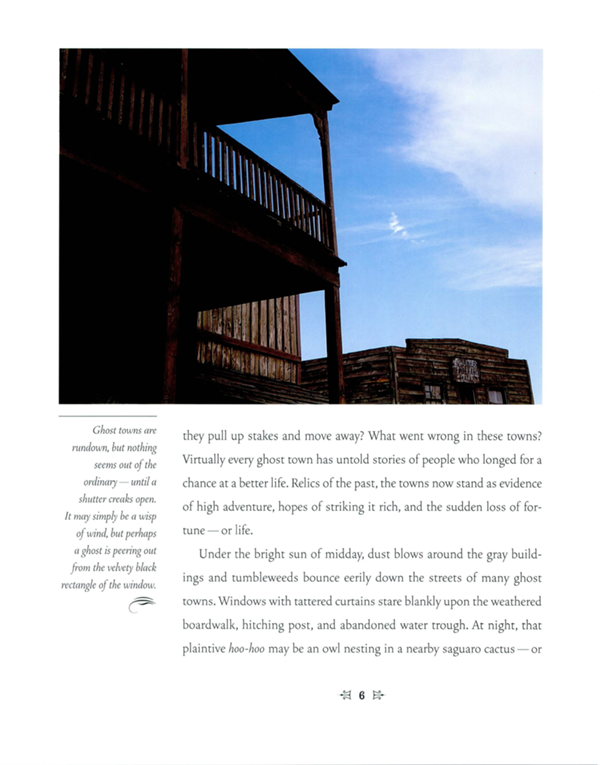
Ghost towns are rundown, but nothing seems out of the ordinaryuntil a shutter creaks open. It may simply be a wisp of wind, but perhaps a ghost is peering out from the velvety black rectangle of the window.
they pull up stakes and move away? What went wrong in these towns? Virtually every ghost town has untold stories of people who longed for a chance at a better life. Relics of the past, the towns now stand as evidence of high adventure, hopes of striking it rich, and the sudden loss of fortuneor life.
Under the bright sun of midday, dust blows around the gray buildings and tumbleweeds bounce eerily down the streets of many ghost towns. Windows with tattered curtains stare blankly upon the weathered boardwalk, hitching post, and abandoned water trough. At night, that plaintive hoo-hoo may be an owl nesting in a nearby saguaro cactusor
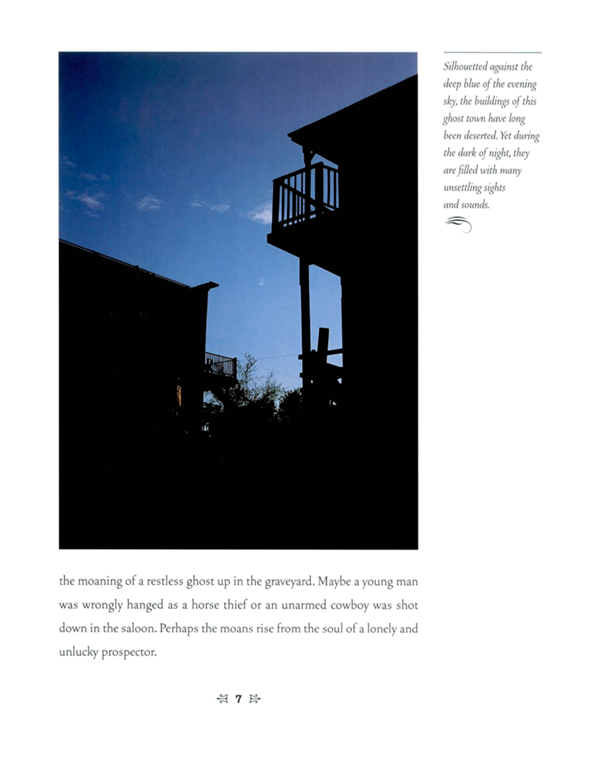
Silhouetted against the deep blue of the evening sky, the buildings of this ghost town have long been deserted. Yet during the dark of night, they are filled with many unsettling sights and sounds.
the moaning of a restless ghost up in the graveyard. Maybe a young man was wrongly hanged as a horse thief or an unarmed cowboy was shot down in the saloon. Perhaps the moans rise from the soul of a lonely and unlucky prospector.
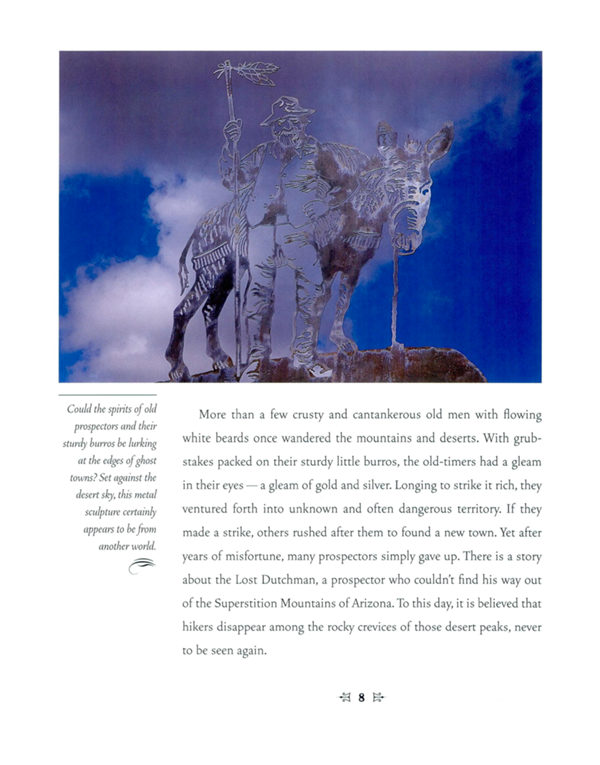
Could the spirits of old prospectors and their sturdy burros be lurking at the edges of ghost towns? Set against the desert sky, this metal sculpture certainly appears to be from another world.
More than a few crusty and cantankerous old men with flowing white beards once wandered the mountains and deserts. With grubstakes packed on their sturdy little burros, the old-timers had a gleam in their eyesa gleam of gold and silver. Longing to strike it rich, they ventured forth into unknown and often dangerous territory. If they made a strike, others rushed after them to found a new town. Yet after years of misfortune, many prospectors simply gave up. There is a story about the Lost Dutchman, a prospector who couldn't find his way out of the Superstition Mountains of Arizona. To this day, it is believed that hikers disappear among the rocky crevices of those desert peaks, never to be seen again.
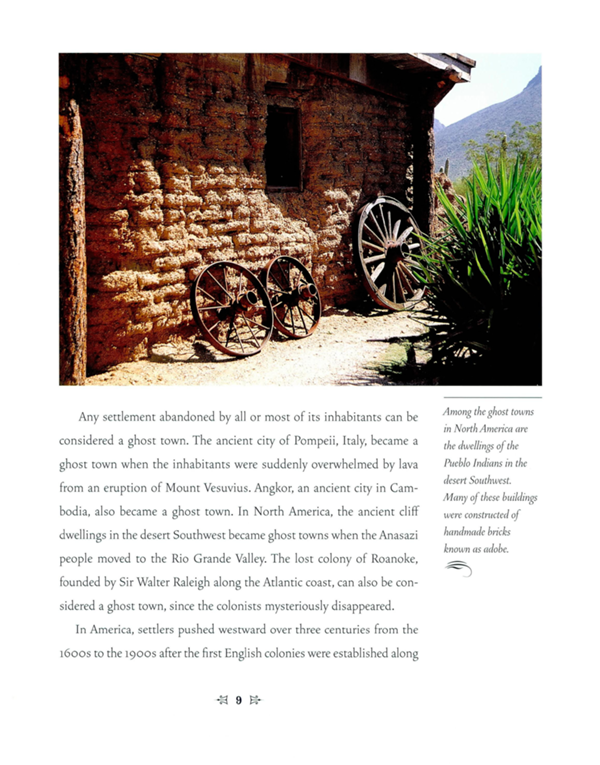
Among the ghost towns in North America are the dwellings of the Pueblo Indians in the desert Southwest. Many of these buildings were constructed of handmade bricks known as adobe.
Any settlement abandoned by all or most of its inhabitants can be considered a ghost town. The ancient city of Pompeii, Italy, became a ghost town when the inhabitants were suddenly overwhelmed by lava from an eruption of Mount Vesuvius. Angkor, an ancient city in Cambodia, also became a ghost town. In North America, the ancient cliff dwellings in the desert Southwest became ghost towns when the Anasazi people moved to the Rio Grande Valley. The lost colony of Roanoke, founded by Sir Walter Raleigh along the Atlantic coast, can also be considered a ghost town, since the colonists mysteriously disappeared.
In America, settlers pushed westward over three centuries from the 1600s to the 1900s after the first English colonies were established along
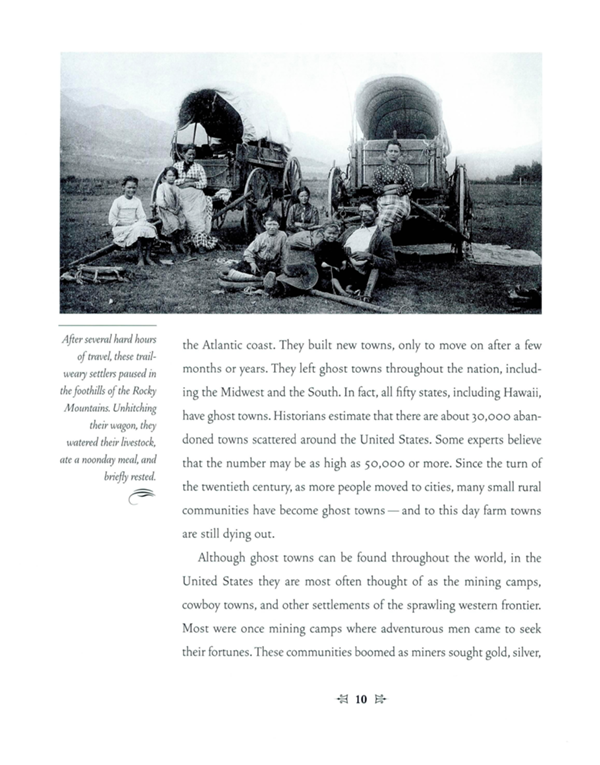
After several hard hours of travel, these trail-weary settlers paused in the foothills of the Rocky Mountains. Unhitching their wagon, they watered their livestock, ate a noonday meal, and briefly rested.
the Atlantic coast. They built new towns, only to move on after a few months or years. They left ghost towns throughout the nation, including the Midwest and the South. In fact, all fifty states, including Hawaii, have ghost towns. Historians estimate that there are about 30,000 abandoned towns scattered around the United States. Some experts believe that the number may be as high as 50,000 or more. Since the turn of the twentieth century, as more people moved to cities, many small rural communities have become ghost townsand to this day farm towns are still dying out.
Although ghost towns can be found throughout the world, in the United States they are most often thought of as the mining camps, cowboy towns, and other settlements of the sprawling western frontier. Most were once mining camps where adventurous men came to seek their fortunes. These communities boomed as miners sought gold, silver,
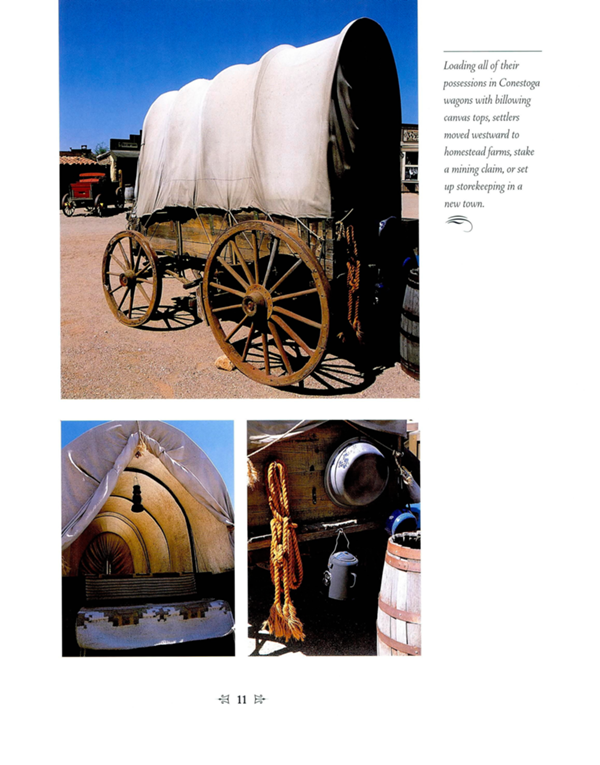
Next page
